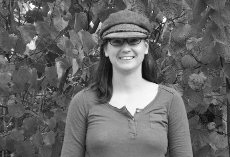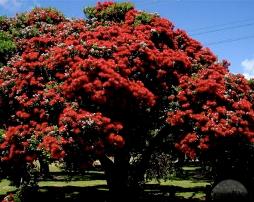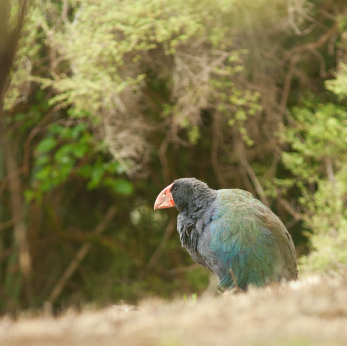
Suzanne Hoehne
Biohabitats ecologist Suzanne Hoehne is spending a month in Auckland, New Zealand, as part of a Rotary Group Study Exchange program. Suzanne promised to keep us up to date on her adventure, and we’re delighted to share her first post:
Today we visited Rangitoto Island Preserve, which has the largest preserved Pohutukawa (Metrosideros excelsa) forest in the world. Pohutukawa forests used to cover much of New Zealand, and around Christmas time, the whole island blooms in red, hence the tree’s nickname, the Christmas tree.
Rangitoto is the youngest of the islands in the Hauraki Gulf. No longer an active volcano, it supports over 200 species of moss, plants and trees. After a successful eradication program that was started 20 years ago, the island is now pest-free wildlife sanctuaries as of August 2011. The Department of Conservation has removed nine animal species from the islands including, possums, wallabies, stoats, rats, feral cats, hedgehogs, and rabbits. To keep the invasives down, you have to clean off your shoes before getting on the ferry!
Rangitoto will now become home to the takehē, a unique, flightless bird once thought to be extinct. with aims to have them house the largest population of takahē outside of Fiordland.
Further Reading
Meet Water Resources Engineer Kayla BrownNew Mexico Must Become a Catcher of Rain
Ripple Effects
Get to know Water Resources Engineer Jake Radeff
Meet Conservation Biologist Nolan Schillerstrom
More From This Author
An American Ecologist in New Zealand: Part IV, Green Roofs!How does Biomimicry Relate to Stream Restoration?
“Alone in a world of wounds”
An American Ecologist in New Zealand: Part III
An American Ecologist in New Zealand: Part II



